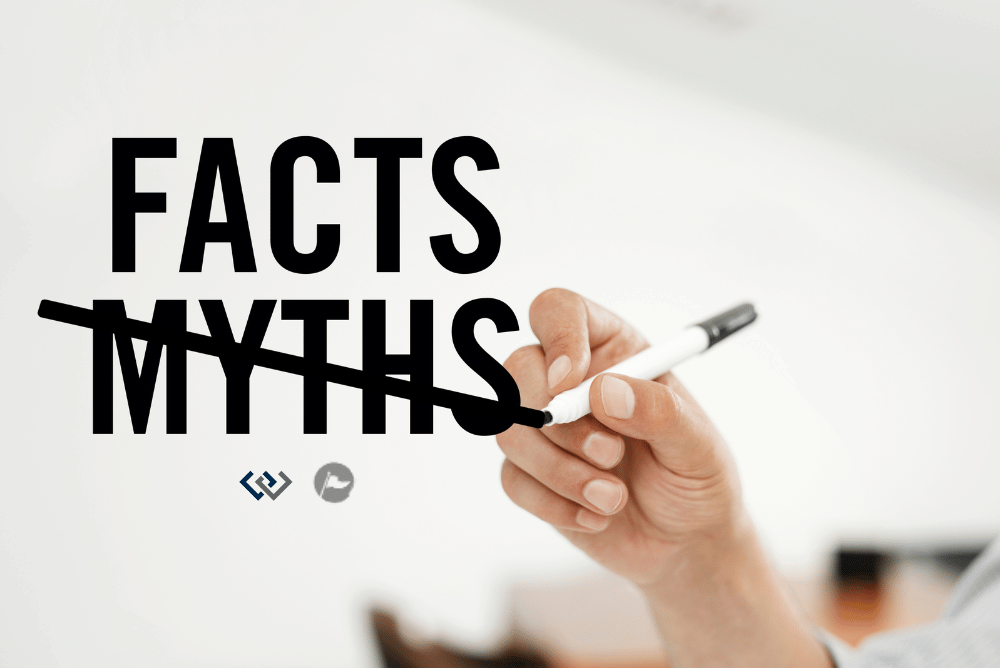If the dream of homeownership often feels unattainable, consider analyzing what you hear and assumptions people often make. Cherie Kesti, Penrith Branch Manager and Mortgage Consultant, has heard many myths and misconceptions. She has over 20 years of experience in the home financing industry. So, we asked if she would provide the facts, and she graciously agreed. Here are 10 homeownership myths debunked.

Cherie Kesti, Branch Manager/Mortgage Consultant, NMLS #754397
Myth #1: I need a 20% down payment
If you have a 20% down payment, great. However, you may qualify with as little as 3% down if you’re a first-time home buyer. Even 5% down is a possibility if you’re not a first-time home buyer purchasing your primary home. Also, there are -0- down payment loans such as VA and USDA as qualifications allow.
Myth #2: I’ll wait to buy with today’s interest rates
Waiting could cost you. First of all, home values will increase over time. Then, if interest rates do fall again, there will be much more competition to purchase homes. This could make it more difficult to get the home you want. Look at it this way: marry the house and date the rate. You can always refinance the mortgage rate if they drop again. Conversely, you may not be able to purchase at the same level in a year or two or three from now.
Myth #3: I can’t qualify for an investment home
Did you know you can purchase a 2 – 4 family home, live in one unit, and then collect rent on the units that you don’t occupy as your primary home? Plus, you could do this with as little as 3.5% down payment!
Myth #4: I need a 720-credit score
There are mortgage loan programs available for buyers with lower credit scores.
Myth #5: I’ll never have enough for a down payment
There are down payment assistance programs available to help cover the down payment and some closing costs based on qualifications. In addition, did you know that a monetary gift from a family member is allowed and an acceptable source of down payment and closing costs? Did you know that you may be able to borrow money from certain retirement accounts to access funds for a down payment on a home?
Myth #6: Renting is cheaper than homeownership
If you move around a lot, yes, renting might be cheaper. However, if you’re putting down roots, homeownership has traditionally proven to be a positive financial investment with appreciation over a period 5 – 9 years. Typically, if you put down the minimum down payment at the time of purchase, it is recommended that you stay in your home long enough for the equity to build. Typically, this means having enough equity to cover your selling costs. Selling costs may amount to about 8% to 9% of your sales price.
Myth #7: Bankruptcy/ foreclosure ruined my chances
If this kind of event happened one to four years ago, you may be able to qualify for a new home loan. Never lose hope! Always call and ask.
Myth #8: Pre-qualification is the same as pre-approval
Pre-qualification usually means that your loan application and credit have been completed successfully online, and that’s all. However, pre-approval goes further. It means your supporting documents have been reviewed & approved by a formal underwriter who has approved your loan terms and conditioned the approval for property-related items such as a purchase agreement, appraisal, title report, and homeowner’s insurance for the new home. It is best to be fully approved before putting yourself under a legal contract to purchase a home. This will prevent unforeseen qualification blunders.
Myth #9: Self-employed= financing is impossible
When approval on a traditional mortgage loan seems impossible for a self-employed borrower, stay positive. There are mortgage loan programs where qualifying on the income received in business bank statements will be the answer to a successful approval.
Myth #10: You need a social security number
With at least one year of employment history, a valid ITIN card, or an IRS letter, financing a home may be possible. It could even be possible with as little as 15% down and credit scores as low as 600.
Homeownership is possible even in today’s housing market with rising prices and interest rates. First and foremost, take the time to speak with a lender to go over different loan options and programs. As Cherie Kesti said, “Never lose hope!”
If you have additional questions, contact Cherie.
 Facebook
Facebook
 X
X
 Pinterest
Pinterest
 Copy Link
Copy Link
